Arbinger Institute's Blog, page 2
November 21, 2024
How human-centric is your leadership approach? [Quiz]
Discover the power of people-centered leadership with our interactive quiz. Leadership today demands more than just achieving goals—it’s about creating environments where people can truly thrive. Our quiz is designed to help you uncover whether your leadership approach prioritizes people and fosters a human-centered culture.
Reflect on your leadership styleThis quiz is designed to provide valuable insights into how your leadership style impacts those around you. Are you creating a workplace where individuals feel valued, heard, and motivated? Or is there room for growth in adopting practices aligned with human-centered leadership principles?
By answering a few questions, you’ll:
Reflect on your current leadership practices.Discover areas where you excel.Identify opportunities to develop a stronger human-centered approach.Why human-centered leadership mattersLeaders who prioritize people build trust, drive engagement, and inspire loyalty. They lead with empathy and understanding, creating a culture where collaboration and well-being thrive. Human-centered leadership isn’t just a philosophy—it’s a proven way to unlock the full potential of your team.
Start your journey toward a human-first cultureAre you cultivating an environment where people thrive, or could there be untapped potential in your leadership? Take the quiz below to find out how well you’re fostering a human-centered culture and what steps you can take to improve.
How often do you schedule one-on-one meetings with your team members to focus on their goals and overall well-being? Annually Quarterly Monthly Regularly, as needed Powered by Typeform #outlook a{padding:0}body{margin:0;padding:0;-webkit-text-size-adjust:100%;-ms-text-size-adjust:100%}table,td{border-collapse:collapse;mso-table-lspace:0pt;mso-table-rspace:0pt}img{border:0;height:auto;line-height:100%;outline:none;text-decoration:none;-ms-interpolation-mode:bicubic}p{display:block;margin:13px 0}@media only screen and (min-width:480px){.mj-column-px-640{width:640px !important;max-width:640px}.mj-column-per-100{width:100% !important;max-width:100%}}.moz-text-html .mj-column-px-640{width:640px !important;max-width:640px}.moz-text-html .mj-column-per-100{width:100% !important;max-width:100%}.mj-column-px-640{width:100% !important;max-width:640px}/*!sc*/data-styled.g1[id="sc-global-juhJZJ1"]{content:"sc-global-juhJZJ1,"}/*!sc*/The post How human-centric is your leadership approach? [Quiz] appeared first on Arbinger.
The evolving roles and responsibilities of managers: 2025 workplace trends
The workplace is transforming rapidly, and with it, the expectations and responsibilities of managers are evolving. Gone are the days when managers were viewed solely as authority figures, directing tasks and enforcing rules. Today, successful managers are those who lead through empathy and empowerment. They have become the critical link between organizational goals and employee experiences, building trust and fostering collaboration.
According to our latest report, 2025 Workplace Trends: Building a People-First Culture, organizations with exceptional leaders experience significantly fewer challenges in core areas like employee retention, engagement, and alignment. This people-first approach to management fosters greater autonomy, respects individual strengths, and encourages a work culture that balances productivity with individual well-being. Such leadership styles align closely with emerging workforce trends, emphasizing the need for adaptability in a modern workplace.
The data is compelling: Companies that prioritize leadership excellence are seeing concrete benefits, especially in how they support and engage their workforce. Let’s take a closer look at some of our key findings surrounding the evolution of management in the workplace.
Why trends in the workplace demand managerial evolutionManagers are now stepping into roles that emphasize empowerment rather than control. Data shows that organizations focusing on empowerment—encouraging autonomy and celebrating individual strengths—report higher levels of engagement, innovation, and employee satisfaction. In this new paradigm, managers are encouraged to serve as “conductors” and “coaches,” guiding their teams in ways that bring out their best abilities rather than simply directing work.
Harvard Business Review further substantiates this shift, with studies showing that companies have moved toward leadership that supports employee autonomy. These managers aren’t just supervisors—they’re mentors, problem-solvers, and collaborators who create an environment where individuals feel valued and capable of contributing meaningfully. This people-first mindset builds resilient teams, confident in their ability to adapt to change and seize new opportunities.
What does a manager do today?Beyond day-to-day operational responsibilities, managers are called to act as mediators between leadership goals and team needs. By enabling their teams to take ownership of their work, managers foster an environment where autonomy thrives. They are also tasked with understanding individual motivations and aligning them with team objectives, creating a win-win dynamic for both employees and the organization.
This shift reflects broader trends in the workplace for 2025, where employees demand greater flexibility, innovation, and connection from leadership. Modern managers who can embrace this evolution are not only meeting these demands but also setting the stage for sustainable growth.
A manager’s role in driving workforce alignmentAnother critical finding from our research that’s influencing the role of managers is called “the disconnect effect”—a significant gap between executive perceptions and employee experiences. While executives may see initiatives as successful, frontline employees often experience them differently due to gaps in communication, implementation, and follow-through. In fact, we found that only 10% of non-supervisory employees feel that their opinions and input are genuinely recognized, compared to 63% of executives.
Bridging this gap is essential. When employees feel unheard, it not only affects their engagement but also their performance. By prioritizing regular check-ins, open feedback loops, and transparent communication channels, managers can help align perceptions across organizational levels. This ensures that all voices are heard, creating a more unified, cohesive workplace culture that fosters trust and connection.
How aligned are you with your team?Take a moment to check in with yourself as a manager. How aligned are you with your team? This quick self-assessment will help you evaluate your communication practices, feedback frequency, and openness to new ideas. By understanding where you stand, you can begin bridging the disconnect effect and foster a stronger, more unified workplace.
When team members offer feedback, how do you respond? I focus primarily on executive directives rather than team feedback. I listen and consider their ideas, implementing them sometimes. I actively encourage and implement their suggestions where possible. I listen but rarely act on their feedback. Powered by Typeform #outlook a{padding:0}body{margin:0;padding:0;-webkit-text-size-adjust:100%;-ms-text-size-adjust:100%}table,td{border-collapse:collapse;mso-table-lspace:0pt;mso-table-rspace:0pt}img{border:0;height:auto;line-height:100%;outline:none;text-decoration:none;-ms-interpolation-mode:bicubic}p{display:block;margin:13px 0}@media only screen and (min-width:480px){.mj-column-px-640{width:640px !important;max-width:640px}.mj-column-per-100{width:100% !important;max-width:100%}}.moz-text-html .mj-column-px-640{width:640px !important;max-width:640px}.moz-text-html .mj-column-per-100{width:100% !important;max-width:100%}.mj-column-px-640{width:100% !important;max-width:640px}/*!sc*/data-styled.g1[id="sc-global-juhJZJ1"]{content:"sc-global-juhJZJ1,"}/*!sc*/How do trends in the workplace shape alignment?Modern managers must address shifting employee expectations, particularly in hybrid and remote environments. Flexible working conditions are no longer optional but expected, and managers who can seamlessly align these new realities with organizational goals will see greater team engagement and satisfaction. Effective alignment involves not only strategic communication but also intentional efforts to make every team member feel valued and heard.
Managers are responsible for creating human connection at workThe role of the manager has evolved beyond the traditional scope of day-to-day operations. Today’s leaders are increasingly recognized as cultural architects, shaping the very fabric of their organizations. As we navigate the complexities of remote work, hybrid models, and diverse employee expectations, managers are called upon to embody and promote organizational values. This transformation isn’t merely about achieving operational goals; it’s about fostering a culture where employees feel valued, inspired, and empowered.
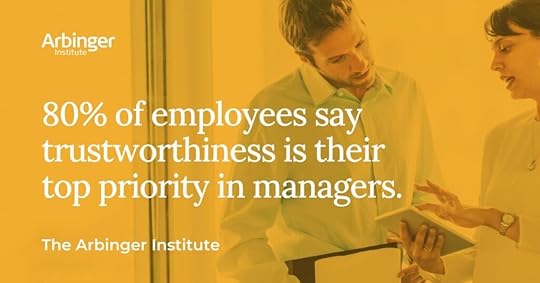 The importance of empathy in the workplace
The importance of empathy in the workplaceOur research reveals a compelling correlation between empathetic leadership and organizational success. Companies with managers who prioritize human connection exhibit significantly lower turnover rates and stronger team performance metrics. High-trust managers foster psychological safety, empowering individual contributors to innovate, collaborate, and take risks without fear of failure. In fact, a staggering 80% of professionals identified trustworthiness, active listening (67%), and accountability (67%) as the most critical qualities in a leader. These aren’t soft skills; they are the bedrock of effective leadership.
How does a manager’s role evolve to prioritize empathy?Managers are increasingly expected to show emotional intelligence, balancing business outcomes with team well-being. By practicing active listening and addressing individual needs, managers build stronger relationships that enhance trust and collaboration. Empathy is not just a personal trait but a strategic asset in building team cohesion and driving long-term success.
Employees today seek managers who are not only competent but also compassionate. Leaders who embody empathy, reliability, and approachability cultivate a culture of trust and openness, essential ingredients for high-performing, engaged teams. This shift towards psychological safety is a catalyst for innovation and collaboration. When employees feel safe to express ideas, take risks, and show up authentically, they become more resilient. Managers are uniquely positioned to create such environments, aligning cultural values with day-to-day team interactions.
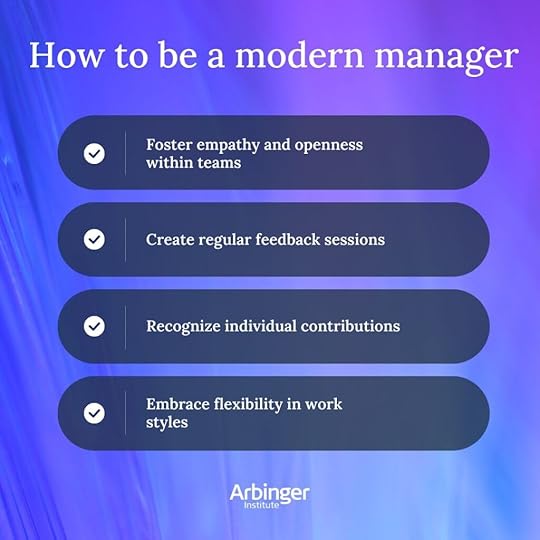 The future roles and responsibilities of managers
The future roles and responsibilities of managersLooking ahead, the role of the manager will likely continue to evolve as workplaces become more dynamic. Managers who can adapt to these changes, prioritize empathy, and foster genuine connections will be at the forefront of organizational success. Forward-thinking organizations are investing in programs that equip managers with the tools and training needed to support this shift.
For organizations that want to stay ahead of the curve, understanding and applying these managerial insights is crucial. Managers who lead with empowerment, prioritize trust, and maintain open communication are transforming workplaces, bridging the gap between employees and leadership, and driving success in new, sustainable ways.
Download Arbinger’s 2025 Workplace Trends Report: Building a People-First Culture to explore these insights in detail and equip your managers with the tools they need to thrive in the modern workplace.
 hbspt.cta.load(23346030, '0ef01f44-20e5-42d3-8505-3089d3fe78fa', {"useNewLoader":"true","region":"na1"});
hbspt.cta.load(23346030, '0ef01f44-20e5-42d3-8505-3089d3fe78fa', {"useNewLoader":"true","region":"na1"}); The post The evolving roles and responsibilities of managers: 2025 workplace trends appeared first on Arbinger.
November 20, 2024
Workplace trends for 2025: What’s changing in the workforce?
As the modern workplace continues to evolve, organizations are navigating shifts in employee expectations, leadership priorities, and the role of technology. Arbinger’s 2025 Workplace Trends Report highlights the latest transformations shaping the future of work and offers actionable insights for creating thriving, people-first workplaces.
So, what are workplace trends for 2025? This blog explores seven key themes from the report, including the rise of human-centric leadership, AI’s role in fostering connection, and the redefinition of inclusion in the workforce.
1. Human-centric understandingIn the era of current workplace trends, organizations are focusing on creating deeper connections with employees. Despite this, only 25% of professionals report having regular conversations with their managers about well-being and collaboration.
Why it matters: Employees thrive when their unique contributions and challenges are acknowledged. This shift aligns with employee engagement trends that prioritize empathy, connection, and purpose.
2025 insight: Organizations that emphasize human-centric leadership—recognizing employees as individuals, not just roles—see stronger retention and higher engagement.
2. Using AI to make room for more humanity at workTechnology is reshaping modern workplace trends, and AI is leading the charge. While 73% of professionals believe AI will free up time for human connection, only 32% of non-supervisory employees share this optimism.
Why it matters: AI has the potential to reduce administrative burdens, empowering employees to focus on creative, high-value tasks. However, it must be implemented thoughtfully to enhance—not erode—human interaction.
2025 insight: The report explores how AI supports trends in workforce development by creating space for collaboration, personal growth, and meaningful work.
3. The Great Re-EngagementWith employee disengagement at record levels, employee engagement trends are shifting from quiet quitting to re-engaging the workforce. Nearly 45% of professionals say morale and engagement need significant improvement.
Why it matters: Disengaged employees can negatively impact productivity, collaboration, and innovation. Rebuilding purpose and connection is essential for sustainable growth.
2025 insight: Organizations embracing trends in HR management are fostering cultures of purpose, responsibility, and shared goals to drive engagement and retention.
4. Closing the people gapA sense of purpose is crucial for high-performing teams, yet only 33% of employees report being encouraged to reflect on their impact. In contrast, the most efficient teams are nearly 3x more likely to regularly practice this reflection.
Why it matters: Purpose and accountability are at the heart of workplace trends that drive success. Employees who see their role in the bigger picture are more motivated and collaborative.
2025 insight: Building a people-first culture requires organizations to align individual roles with broader goals, leveraging career trends and development opportunities to create a sense of shared ownership.
5. Transformation of the HR functionHR trends are evolving, with HR playing a more strategic role in shaping company culture and workforce development. Today, 92% of HR professionals report having a significant influence on organizational strategy.
Why it matters: As HR shifts from a compliance focus to a strategic partner, key areas like inclusion, well-being, and leadership development become bigger focuses for HR teams.
2025 insight: The report highlights trends in HR management, including HR teams leading cultural transformations and aligning people-centered strategies with business goals.
6. Redefining inclusionInclusion within an organization is proven to be a driver of innovation. Companies excelling in current workplace trends are broadening their definition of inclusion to encompass diverse perspectives, skills, and experiences.
Why it matters: Inclusive workplaces foster collaboration, creativity, and engagement, aligning with trends in the workplace that prioritize belonging and psychological safety.
2025 insight: The report explores how rethinking inclusion is creating environments where employees feel valued, respected, and empowered to contribute fully.
7. The evolving role of the managerManagers are shifting from traditional authority figures to strategic coaches, focusing on empowerment, collaboration, and autonomy. Despite this, only 35% of employees feel their managers strongly support their growth.
Why it matters: Managers are critical to trends in workforce development, shaping engagement and productivity through trust and accountability.
2025 insight: The report identifies career trends in management development, emphasizing leadership qualities like trustworthiness, communication, and adaptability.
ConclusionThe workforce of 2025 is defined by human connection, inclusive leadership, and purposeful alignment between organizational goals and employee experience. By embracing these workplace trends, organizations can create thriving environments where employees and businesses succeed together.
To explore these insights further, download the 2025 Workplace Trends Report and discover actionable strategies for transforming your workplace in the future.
 hbspt.cta.load(23346030, ‘0ef01f44-20e5-42d3-8505-3089d3fe78fa’, {“useNewLoader”:”true”,”region”:”na1″});
hbspt.cta.load(23346030, ‘0ef01f44-20e5-42d3-8505-3089d3fe78fa’, {“useNewLoader”:”true”,”region”:”na1″}); The post Workplace trends for 2025: What’s changing in the workforce? appeared first on Arbinger.
November 19, 2024
Introducing the new Arbinger Portal
We’re thrilled to announce the launch of the new and improved Arbinger Portal, a powerful platform designed to elevate your organization’s culture transformation journey. This significant update takes our digital experience to a new level, offering enhanced tools designed to streamline administrative tasks, deepen user engagement, and reinforce Arbinger’s transformative principles.
What’s new in the portal?The Arbinger Portal has been upgraded to enhance accessibility and provide both administrators and users with even greater support for cultivating a people-focused culture and driving sustained organizational change. This update reflects Arbinger’s commitment to equipping clients with practical, actionable tools that deliver lasting organizational impact.

Here are our favorite upgrades:
Administrator notifications: Stay up-to-date with real-time alerts for activities like new licenses, course changes, and participant progress, ensuring better oversight and timely action.Streamlined course access: Participants can now easily access course materials, respond to event invites, and complete post-course surveys, simplifying the learning journey.Sustainment videos and review tools: Equip users with targeted resources that reinforce key concepts, bridging the gap between training and day-to-day application.Enhanced user experience: Navigate the portal more efficiently with improved speed, a modernized design, and 24/7 access to help resources for uninterrupted support.Continuous learning opportunities: Enhanced tools offer sustained mindset transformation and lasting business impact.These updates ensure the Arbinger Portal continues to be a powerful tool for driving meaningful, sustainable change across organizations.
What’s the significance of this update?The new Arbinger Portal represents a significant leap forward in supporting organizations committed to sustained transformation. Built on the foundation of Arbinger’s outward mindset principles, this digital platform is designed to facilitate ongoing learning, reinforce productive behaviors, and drive long-term organizational change. Specifically tailored for Arbinger clients, the portal offers an array of tools and resources that help organizations maintain and amplify the outcomes of Arbinger’s training programs.
This latest update builds on the portal’s strengths, introducing advanced features that enhance usability, accessibility, and engagement. Our new portal is also Section 508 WCAG 2.0 Level AA compliant. This means it meets federal accessibility standards, ensuring that individuals with disabilities can navigate and interact with the portal seamlessly. For administrators, the upgrade provides enhanced tools to track participation, measure progress, and customize content to align with specific organizational goals. For individual users, the portal now includes enriched resources and interactive features designed to deepen their understanding of Arbinger’s principles and embed them into daily work practices.
Benefits for administrators: New tools simplify the management process, allowing you to focus more on impact and less on logistics.Benefits for users: Reinforcement tools ensure Arbinger’s principles resonate beyond the training sessions, fostering long-lasting behavioral change.By reinforcing behaviors that improve team dynamics, collaboration, and accountability, the new Arbinger Portal becomes more than a learning platform—it’s a vital tool for cultivating a high-performance culture and fostering meaningful, sustainable change across organizations.
A sneak peek at the new portalHere’s a glimpse of what’s waiting for you in the upgraded portal:
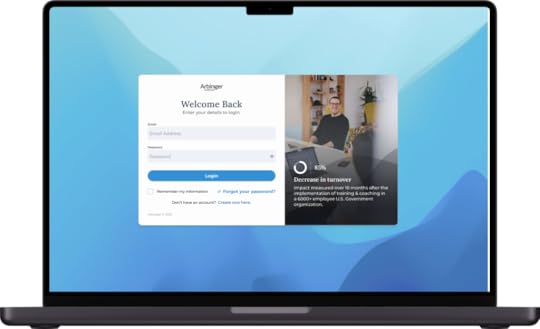
Starting today, users and administrators can log in to the Arbinger Portal to explore new features. Our support team is ready to assist with any questions to ensure a seamless transition.
Need help? Visit our support page for assistance.Want a tour? Schedule a personalized consultation to discuss how the portal can address your organization’s unique needs.
The redesigned dashboard offers users an intuitive layout with quick access to notifications, learning resources, progress tracking, and licenses.
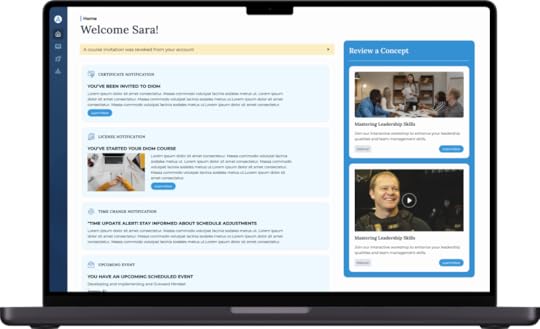
New sustainment video tools (pictured above under ‘Review a Concept’) enable users to revisit and reinforce key concepts on demand.
Experience the new Arbinger PortalThe new Arbinger Portal isn’t just an upgrade—it’s an invitation to elevate your organization’s commitment to culture transformation. By combining cutting-edge features with Arbinger’s proven methodologies, this portal is your key to fostering accountability, collaboration, and resilience across your teams. Stay tuned for more updates and resources as we celebrate this exciting milestone!
Log in now or talk to an Arbinger expert to discover how these enhancements can make a lasting impact on your organization.
The post Introducing the new Arbinger Portal appeared first on Arbinger.
November 12, 2024
How to assess company culture in the interview process
Organizational culture is the invisible force that touches every facet of an organization, shaping everything from team performance to employee morale. To assess company culture effectively during the interview process, senior executives and individual contributors alike must approach the conversation with a keen eye for nuance and alignment. Arbinger’s recent research report found that 88% of the leaders anticipate the importance of company culture will significantly increase in the coming year.
Assessing culture isn’t about surface-level observations or generic answers to general questions; it’s about understanding the mindset that drives the underlying values, communication styles, and decision-making processes that guide the team. Mindset is a key differentiator here—how people see and think about their work and each other influences their behavior and, ultimately, the culture itself.
What are good questions to ask about culture?Before you start the interview process, take time to identify a good culture fit for you. Understanding if you are a culture fit is essential for both personal satisfaction and professional success.
To make the most of your interview and assess culture accurately, ask questions about your potential role and how the organization envisions your integration into the team. For example, ask, “How do you see my role fitting into the leadership team, and what level of autonomy would I have?” or “How does this role interact with other departments?”
It’s crucial to understand how your contributions will be valued and whether you’ll have the autonomy and support needed to make an impact. Just because the job description states that you’ll report directly to the CEO or be a core leadership team member doesn’t guarantee you’ll have a voice at the table or the freedom to drive change.
Five drivers of company cultureTo truly understand and assess a company’s culture, focus on these five critical drivers: accountability, collaboration, employee engagement, inclusion, and psychological safety. These elements reflect the organization’s underlying mindset and are pivotal in shaping how teams interact, make decisions, and work toward common goals.
Accountability Collaboration Employee engagement Inclusion Psychological safety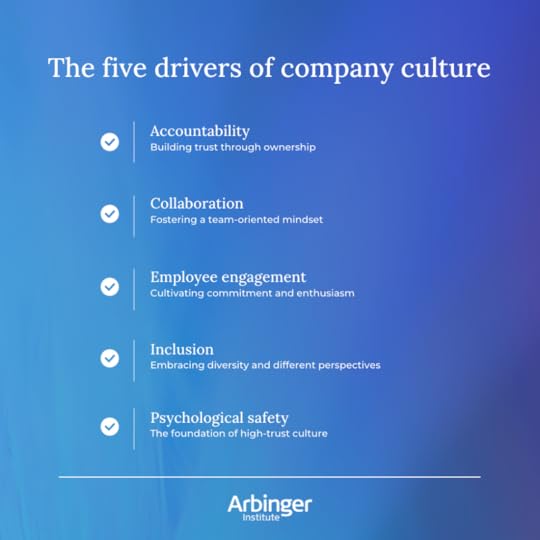 Accountability: Building trust through ownership
Accountability: Building trust through ownershipA culture of accountability is essential for trust and high performance. In accountable cultures, individuals take ownership of their actions and are responsible not only for their successes but also for their failures. This mindset fosters trust within the team, as everyone knows they can rely on their colleagues to follow through on commitments and own up to mistakes.
To gauge the level of accountability within a leadership team, ask, “How does the team handle accountability, especially when things don’t go as planned?” Strong responses will demonstrate that leaders encourage ownership and learning from setbacks, fostering an environment where people take accountability instead of a culture where fingers are pointed, and blame is assigned, and others are responsible for holding people accountable.
Collaboration: Fostering a team-oriented mindsetCollaboration is critical to effective teams, and high-performing organizations cultivate a mindset that values collective success over individual achievements. Ask questions such as, “How does the leadership team promote collaboration across departments?” or “Can you provide an example of a cross-functional project and how it was managed?”
Leaders actively facilitate open communication in collaborative cultures and create structures that allow teams to work together seamlessly. Look for responses that emphasize structured processes for collaboration, like taking the time to start the right way before kicking off a project—or regular impact check-ins once the project is underway.
These types of practices reveal a commitment to unity and collective problem-solving as well as understanding our impact on others and the big picture. When teams adopt a collaborative mindset, they are more adaptable and innovative, able to tackle complex challenges through shared insight and cooperation.
Employee engagement: Cultivating commitment and enthusiasmEmployee engagement reflects how connected and motivated team members feel toward their work and the organization. An engaged workforce demonstrates higher morale, productivity, and commitment to organizational goals. To assess this aspect, consider asking, “How does the team keep employees engaged, particularly during challenging times?” or “What strategies are in place to support career development and motivation?”
Responses highlighting ongoing efforts to connect with employees, such as employee development opportunities and regular feedback sessions, indicate a culture that values engagement and sees employees as integral to the organization’s success. A mindset focused on engagement shows that the organization understands the importance of fostering a committed, motivated workforce not just for the sake of productivity but overall employee satisfaction.
Inclusion: Embracing diversity and different perspectivesInclusion is about creating an environment where everyone feels valued, respected, and heard.
To truly create a culture of inclusion and belonging, you must address the harmful beliefs and behaviors that hold people back. Organizations need to confront the implicit biases at their source.
Inclusive cultures recognize that diverse perspectives lead to richer ideas and more robust solutions, and they cultivate a mindset that embraces rather than resists differences. Ask questions like, “How does the leadership team ensure all voices are heard?” and “What steps are taken to foster and address the underlying biases within the team?”
Strong responses will point to tangible practices that help people see each other as people who matter as much as they do. Encouraging a sense of belonging must address the root causes of the mindset that’s driving exclusive behaviors. By shifting mindsets, organizations can pave the way for real change to create inclusive workplaces that embrace diverse perspectives and make everyone feel valued and included.
Psychological safety: The foundation of a high-trust culturePsychological safety is increasingly recognized as a cornerstone of successful teams. When team members feel safe expressing ideas, taking risks, and voicing concerns without fear of repercussions, they are more likely to contribute innovative ideas and tackle challenges collaboratively.
To gauge the level of psychological safety within a leadership team, ask, “How do team members support each other in expressing diverse viewpoints?” or “How do you create an environment where everyone feels safe to speak up?” Leadership teams that value inclusivity often have tangible practices, like regular feedback sessions or forums for open discussion, that encourage diverse voices.
An environment lacking psychological safety can sometimes be identified by common mindsets, such as the philosophy of “Don’t bring me a problem without a solution.” While this approach may sound pragmatic, it discourages team members from raising concerns or identifying potential issues unless they have immediate answers.
This mindset can stifle innovation, brainstorming, and open communication, leading to a disengaged culture where people hesitate to speak up. High-performance cultures, in contrast, actively foster psychological safety, enabling everyone to contribute without fear of retribution or dismissal.
Finding cultural alignmentEvaluating a company’s culture through these five drivers—accountability, collaboration, employee engagement, inclusion, and psychological safety—helps paint a clear picture of the organization’s mindset and approach to building a high-performance workplace.
Through thoughtful questions, close observation, and a focus on understanding how mindset shapes behavior, executives and individual contributors can make informed decisions about whether a team’s culture aligns with their values and career aspirations. By prioritizing these key cultural elements, you’ll be better equipped to join an organization where you can thrive, contribute meaningfully, and find long-term satisfaction.
To delve deeper into the nuances of company culture and its impact on the workplace, download our guide, Who Owns Company Culture?
The post How to assess company culture in the interview process appeared first on Arbinger.
November 11, 2024
How to assess company culture in the interview process
Organizational culture is the invisible force that touches every facet of an organization, shaping everything from team performance to employee morale. To assess company culture effectively during the interview process, senior executives and individual contributors alike must approach the conversation with a keen eye for nuance and alignment. Arbinger’s recent research report found that 88% of the leaders anticipate the importance of company culture will significantly increase in the coming year.
Assessing company culture isn’t about surface-level observations or generic answers to general questions; it’s about understanding the mindset that drives the underlying values, communication styles, and decision-making processes that guide the team. Mindset is a key differentiator here—how people see and think about their work and each other influences their behavior and, ultimately, the culture itself.
What are good questions to ask about culture?Before you start the interview process, take time to identify a good culture fit for you. Understanding if you are a culture fit is essential for both personal satisfaction and professional success.
To make the most of your interview and assess company culture accurately, ask questions about your potential role and how the organization envisions your integration into the team. For example, ask, “How do you see my role fitting into the leadership team, and what level of autonomy would I have?” or “How does this role interact with other departments?”
It’s crucial to understand how your contributions will be valued and whether you’ll have the autonomy and support needed to make an impact. Just because the job description states that you’ll report directly to the CEO or be a core leadership team member doesn’t guarantee you’ll have a voice at the table or the freedom to drive change.
The five drivers of company cultureTo truly understand and assess a company’s culture, focus on these five critical drivers: accountability, collaboration, employee engagement, inclusion, and psychological safety. These elements reflect the organization’s underlying mindset and are pivotal in shaping how teams interact, make decisions, and work toward common goals.
Accountability Collaboration Employee engagement Inclusion Psychological safety Accountability: Building trust through ownership
Accountability: Building trust through ownershipA culture of accountability is essential for trust and high performance. In accountable company cultures, individuals take ownership of their actions and are responsible not only for their successes but also for their failures. This mindset fosters trust within the team, as everyone knows they can rely on their colleagues to follow through on commitments and own up to mistakes.
To gauge the level of accountability within a leadership team, ask, “How does the team handle accountability, especially when things don’t go as planned?” Strong responses will demonstrate that leaders encourage ownership and learning from setbacks, fostering an environment where people take accountability instead of a culture where fingers are pointed, and blame is assigned. Others are responsible for holding people accountable.
Collaboration: Fostering a team-oriented mindsetCollaboration is a cornerstone of effective teams, and high-performing organizations cultivate a mindset that values collective success over individual achievements. In your interview, ask questions such as, “How does the leadership team promote collaboration across departments?” or “Can you provide an example of a cross-functional project and how it was managed?”
Leaders actively facilitate open communication in collaborative cultures and create structures that allow teams to work together seamlessly. Look for responses that emphasize structured processes for collaboration, like taking the time to start the right way before kicking off a project—or regular impact check-ins once the project is underway.
These types of practices reveal a commitment to unity and collective problem-solving as well as understanding our impact on others and the big picture. When teams adopt a collaborative mindset, they are more adaptable and innovative, able to tackle complex challenges through shared insight and cooperation.
Employee engagement: Cultivating commitment and enthusiasmEmployee engagement reflects how connected and motivated team members feel toward their work and the organization. An engaged workforce demonstrates higher morale, productivity, and commitment to organizational goals. To assess this aspect of culture during an interview, consider asking, “How does the team keep employees engaged, particularly during challenging times?” or “What strategies are in place to support career development and motivation?”
Interview responses highlighting ongoing efforts to connect with employees, such as employee development opportunities and regular feedback sessions, indicate a culture that values engagement and sees employees as integral to the organization’s success. A mindset focused on engagement shows that the organization understands the importance of fostering a committed, motivated workforce not just for the sake of productivity but overall employee satisfaction.
Inclusion: Embracing diversity and different perspectivesTo truly create a culture of inclusion and belonging, you must address the harmful beliefs and behaviors that hold people back. Organizations need to confront the implicit biases at their source.
Inclusive cultures recognize that diverse perspectives lead to richer ideas and more robust solutions, and they cultivate a mindset that embraces rather than resists differences. To assess company culture through the lens of inclusion in an interview, ask questions like, “How does the leadership team ensure all voices are heard?” and “What steps are taken to foster and address the underlying biases within the team?”
Strong responses will point to tangible practices that help people see each other as people who matter as much as they do. Encouraging a sense of belonging must address the root causes of the mindset that’s driving exclusive behaviors. By shifting mindsets, organizations can pave the way for real change to create inclusive workplaces that embrace diverse perspectives and make everyone feel valued and included.
Psychological safety: The foundation of a high trust culturePsychological safety is increasingly recognized as a cornerstone of successful teams. When team members feel safe expressing ideas, taking risks, and voicing concerns without fear of repercussions, they are more likely to contribute innovative ideas and tackle challenges collaboratively.
To gauge the level of psychological safety within a leadership team during an interview, ask, “How do team members support each other in expressing diverse viewpoints?” or “How do you create an environment where everyone feels safe to speak up?” Leadership teams that value inclusivity often have tangible practices, like regular feedback sessions or forums for open discussion, that encourage diverse voices.
An environment lacking psychological safety can sometimes be identified by common mindsets, such as the philosophy of “Don’t bring me a problem without a solution.” While this approach may sound pragmatic, it discourages team members from raising concerns or identifying potential issues unless they have immediate answers.
This mindset can stifle innovation, brainstorming, and open communication, leading to a disengaged culture where people hesitate to speak up. High-performance cultures, in contrast, actively foster psychological safety, enabling everyone to contribute without fear of retribution or dismissal.
Finding cultural alignment during the interview processEvaluating a company’s culture through these five drivers—accountability, collaboration, employee engagement, inclusion, and psychological safety—helps paint a clear picture of the organization’s mindset and approach to building a high-performance workplace.
Through thoughtful questions, close observation, and a focus on understanding how mindset shapes behavior, executives and individual contributors can make informed decisions about whether a team’s culture aligns with their values and career aspirations. By prioritizing these key cultural elements, you’ll be better equipped to join an organization where you can thrive, contribute meaningfully, and find long-term satisfaction.
To delve deeper into the nuances of company culture and its impact on the workplace, download our guide, Who Owns Company Culture?
The post How to assess company culture in the interview process appeared first on Arbinger.
October 30, 2024
How to improve workplace efficiency: 3 Proven strategies for success
Workplace efficiency is more than just a buzzword—it’s the difference between success and failure across all organizations, regardless of industry or size Whether you’re managing a corporate office, a government agency, or a local law enforcement team, improving efficiency is the key to achieving your goals. And in sectors where resources are tight, like education and public services, maximizing team performance becomes even more critical.
True workplace efficiency comes from fostering a culture where people are motivated, connected, and aligned with the organization’s larger purpose. To achieve this culture, organizations must focus on three key areas: leadership development, team performance, and inclusion. These strategies—rooted in valuing people—drive not only better results but a more engaged and collaborative workplace. Let’s explore how these elements can transform your organization into one that performs at its peak.
1. Leadership development: The catalyst for workplace efficiencyTrue workplace efficiency starts with a leadership team that inspires and aligns people with a shared vision. When leaders invest in their people, teams become more motivated, innovative, and accountable. The result? A workplace where people and performance soar. To unlock this potential, leaders must prioritize developing communication, trust, and accountability on their teams—key elements that turn everyday tasks into extraordinary outcomes.
Improve communication skillsEffective communication strategies are vital to achieving workplace efficiency! It involves conveying ideas in a way that fosters understanding, connection, and collaboration among colleagues. Leaders who adopt these strategies are not solely focused on giving directives. Instead, they prioritize understanding their team members’ perspectives, ensuring that each person feels valued and heard.
Not only does this two-way communication clarify roles and expectations, but it also boosts employee engagement, investment in team outcomes, and overall job satisfaction. When employees feel understood, they are more likely to contribute ideas and collaborate effectively with their colleagues. This can lead to:
Increased innovationImproved decision-makingEnhanced team performanceMoreover, effective communication can help to prevent misunderstandings, resolve conflicts, and build strong relationships within your organization.
Learn to delegate and trustAs a leader, delegating effectively demonstrates your confidence in your team’s abilities and encourages them to take ownership of their work. This creates a sense of accountability, engagement, and motivation.
Empowering your team members to take ownership of their roles not only boosts their motivation but also encourages them to bring fresh ideas and energy to their work. This, in turn, enhances team performance and contributes to a more sustainable workplace. It also frees you up as a leader to focus on strategic priorities, enabling you to address more complex issues and drive overall organizational success.
Lead by exampleYour actions, as a leader, shape organizational culture. And a leader who demonstrates accountability, punctuality, and respect fosters a culture where behaviors are mirrored by the entire team. This not only enhances team performance but also contributes to more efficient and streamlined operations. Such a culture can lead to increased productivity, reduced turnover, and a more positive work environment.

Leading by example is a powerful tool for fostering a positive and efficient work environment. It can help you create a culture of trust, respect, and accountability, which are essential for organizational success. This can have far-reaching benefits, such as attracting top talent, building strong relationships with customers and stakeholders, and achieving long-term success.
2. Improve team performance: The key to operational efficiencyOperational efficiency is closely tied to the performance of teams. By fostering a people-centric culture—where individuals are attuned to each other’s needs, challenges, and goals—teams can work together more effectively. This collaborative approach leads to better teamwork, improved accountability, and ultimately, greater operational efficiency. Here are a few ways that you can improve team performance:
 Implement conflict resolution strategies
Implement conflict resolution strategiesOne of the most critical aspects of improving team performance and operational efficiency is addressing conflicts constructively. In a people-centric culture, conflict resolution is not about avoiding disagreements but using them as opportunities to strengthen relationships and clarify expectations. Team members who approach conflicts constructively, by seeking to understand and resolve underlying issues, can create a more harmonious and productive atmosphere.
Encouraging open and honest communication helps teams work through disagreements without derailing progress. By focusing on resolving issues together, teams not only enhance collaboration but also eliminate inefficiencies caused by unresolved tensions. This results in smoother operations, as conflicts are turned into opportunities for growth and stronger teamwork.
Create accountable teamsWhen every member of a team understands their role in achieving collective goals, a culture of accountability emerges. To nurture accountability, organizations must provide employees with the tools and support they need to succeed. Regular feedback, opportunities for professional development, and a culture of continuous improvement create an environment where individuals feel empowered to take responsibility for their performance and strive for excellence.
When team members hold each other accountable for both individual and team outcomes, a stronger sense of alignment and purpose emerges. This not only leads to greater operational efficiency but also fosters a positive and collaborative work environment where everyone is committed to achieving shared goals.
Nurture an impact-focused mindsetTo truly enhance operational efficiency, teams need to adopt an impact-focused mindset. This means understanding how individual actions contribute to the larger organizational goals and how each team member’s work affects the success of others. When employees are encouraged to see the broader impact of their contributions, they make more thoughtful decisions that align with the organization’s priorities.
An impact-focused mindset helps teams avoid working in silos, fosters collaboration, and ensures that everyone is aligned toward shared outcomes. This not only improves individual and team performance but also drives operational efficiency by ensuring that all efforts are directed toward the organization’s most important objectives. Teams that regularly assess the impact of their actions are more agile, responsive, and effective in achieving long-term success.
3. Embrace inclusion: New perspectives for greater collaborationInclusion means creating a workplace where every team member feels valued, heard, and respected. When you ensure that everyone on your team feels included, they become more engaged, contribute innovative ideas, and collaborate more effectively. This boosts team performance and enhances both workplace and operational efficiency.
 Psychological safety
Psychological safetyPsychological safety is the most important factor in creating effective, efficient teams. It involves cultivating an environment where individuals feel safe to share their thoughts, raise concerns, and take risks without fear of negative consequences. To operationalize psychological safety, leaders should focus on fostering open dialogue, encouraging feedback, and addressing concerns in a way that values everyone’s input.
You can create psychological safety by:
Encouraging open conversations: Regularly invite team members to share their perspectives and concerns without judgment. Use structured discussions and feedback sessions to ensure everyone has a voice.Show vulnerability as a leader: By admitting mistakes and demonstrating that it’s okay to take risks and learn from them, you create a ripple effect, where team members feel more comfortable doing the same.Creating support systems: Implement peer support programs or mentorship opportunities to help team members feel more connected and supported. Knowing they have someone to turn to increases confidence and fosters a safe environment for innovation.By prioritizing psychological safety, your teams will feel more confident in sharing new ideas, collaborating effectively, and engaging in conversations that improve both workplace efficiency and operational efficiency.
Inclusion and belongingInclusion and belonging go beyond diversity—they focus on ensuring that everyone feels they are a meaningful part of the organization. Harvard Business Review reports that high belonging leads to a 56% increase in job performance, a 50% drop in turnover risk, and a 75% reduction in sick days. These numbers reflect the power of belonging to drive engagement and team performance.
To create an inclusive culture where everyone feels a sense of belonging, you can:
Ensure representation: Make sure that all voices are represented in decision-making processes, from executive leadership to entry-level employees. This builds a sense of ownership and contribution among all team members.Establish inclusive leadership practices: Leaders should actively support diversity, equity, and inclusion initiatives, modeling behaviors that make everyone feel welcomed and valued. Use inclusive leadership training to equip managers with the tools to foster inclusion across teams.Promote team bonding activities: Encourage activities that bring diverse groups together, allowing employees to connect beyond their daily tasks. These moments of connection build a stronger sense of belonging across the organization.By creating a workplace where every employee feels included and supported, you can achieve higher levels of engagement, performance, and efficiency, reducing turnover and increasing overall operational success.
Reduce unhelpful biasesBiases, whether conscious or unconscious, can limit collaboration and stifle innovation in organizations. Overcoming these biases is crucial for creating a workplace where people can come together with openness and respect. Reprogramming unhelpful biases starts with recognizing their origins and understanding how they affect behavior in the workplace. By addressing biases at their source, you can empower teams to operate more effectively and inclusively.
To reduce biases and promote more inclusive behavior, try to:
Provide bias-awareness training: Equip your teams with the tools to identify and address their own biases. This training should help employees understand the impact of bias on decision-making and interaction and provide strategies for mitigating it in everyday work.Implement structured decision-making processes: Encourage teams to adopt objective criteria when making decisions, whether in hiring, promotions, or project planning. Structured processes reduce the influence of biases and ensure fairness in organizational practices.Promote self-reflection: Encourage team members to regularly assess how they interact with others and consider whether biases may be influencing their decisions. This self-awareness fosters personal growth and enhances collaboration across diverse teams.By actively working to uncover and reduce unhelpful biases, your teams will work more cohesively, resulting in better decision-making, improved workplace efficiency, and more effective operational outcomes.
Your journey to workplace efficiencyWorkplace efficiency is about more than just cutting costs or speeding up processes. It’s about creating an environment where leadership is strong, teams perform at their best, and everyone feels included and valued. Whether you’re working in law enforcement, education, healthcare, or corporate sectors, focusing on leadership, team performance, and inclusion can transform your organization and drive long-term success.
At Arbinger, we understand that improving workplace efficiency begins with a shift in mindset. By focusing outwardly on the success of others, you can create an efficient, collaborative, and inclusive workplace where everyone thrives.
The post How to improve workplace efficiency: 3 Proven strategies for success appeared first on Arbinger.
October 23, 2024
Effective conflict resolution strategies for the workplace
Imagine a workplace where conflicts are addressed proactively, misunderstandings are resolved before they escalate, and employees feel empowered to share their opinions without fear of retaliation. Is this dream too good to be true? It doesn’t have to be! By implementing effective conflict resolution strategies, organizations can cultivate a positive work environment that fosters open communication, collaboration, and innovation.
While conflicts are an unavoidable part of any job, they can be managed constructively with the right approach. Whether it’s a minor misunderstanding or a significant disagreement, knowing how to communicate clearly, listen actively, and find solutions that benefit everyone can prevent issues from escalating and foster stronger teamwork. Let’s explore strategies and skills that can help you resolve workplace conflicts, prevent escalation, and cultivate a more collaborative and harmonious environment.
What is conflict resolution?Conflict resolution is the process of navigating disagreements to find peaceful, constructive solutions. It requires a deep understanding of human behavior and an ability to bridge differences in perspectives, goals, and values.
In the workplace, conflicts are inevitable—and a workplace without conflict isn’t necessarily a good thing. In fact, it often indicates that people don’t feel free to speak their minds. This presents a powerful opportunity to transform conflict into connection, fostering a culture where open dialogue leads to deeper understanding and stronger relationships. With the right skills and strategies, employees and departments can shift focus from contention to collaboration, seeking common ground without sacrificing core principles.
Effective conflict resolution involves several key elements:
Identifying the root causes of conflictsUnderstanding diverse communication stylesCollaborating to reach mutually beneficial outcomesAt its core, conflict resolution enables teams to handle disagreements in ways that lead to better outcomes. And when done right, it shifts the focus from “winning” an argument to working collaboratively to solve problems, ensuring that both individual and organizational goals are met. Conflict, when approached with openness and empathy, becomes a means of strengthening connections and fostering innovation.
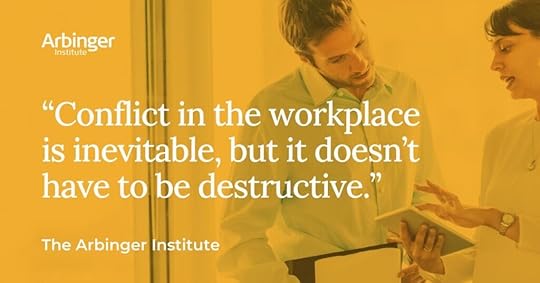 The best conflict resolution strategies for work
The best conflict resolution strategies for workTo foster a positive and cooperative workplace environment, it’s crucial to apply conflict resolution strategies that encourage teamwork and mutual respect. Let’s focus on three proven approaches: collaboration, compromising, and accommodating—all of which promote harmony and cooperation.
Using Arbinger’s tools and templates can deepen the effectiveness of these strategies by providing practical frameworks for seeing others, understanding their perspectives, and breaking through our own mental barriers that might be limiting connection.
1. CollaborateCollaboration is often viewed as the most effective conflict resolution strategy in a workplace setting. It involves both parties working together to fully address everyone’s concerns, with the goal of achieving a solution that benefits all. By collaborating, teams engage in creative problem-solving, which not only resolves conflicts but also strengthens relationships and enhances innovation. The win-win outcomes of collaboration foster trust and support a more cohesive work environment.
Communication tools, such as Arbinger’s Help Another Team or Consider Another’s Experience, can guide teams through the collaboration process. These tools help individuals set aside self-justifying motives and focus on understanding each other’s needs and challenges, promoting genuine cooperation and deeper connection.
Use when: The goal is to meet the needs of all parties involved and to create lasting solutions that benefit the team as a whole.Benefits: Strengthens collaboration, promotes innovation, and builds stronger relationships.2. CompromiseEffective compromise is more than just giving in. It’s about understanding others’ perspectives, building trust, and working together to find solutions that benefit everyone. By prioritizing collective goals and fostering empathy, you can create a win-win environment where everyone feels valued and respected.
Arbinger’s “Influence Pyramid” can be instrumental in this process, as it helps individuals evaluate how their behaviors and perspectives can influence the outcomes of discussions. Compromising with this insight becomes an opportunity for deep understanding and empathy, where both sides work towards a solution that benefits the whole.
Use when: Time is limited, both parties are willing to work together, and the aim is to preserve relationships while keeping the needs of the whole in mind.Benefits: Strengthens relationships by recognizing the importance of mutual respect, encourages collaboration, and allows for a quicker resolution without sacrificing the collective good.3. AccommodateAccommodating is a deliberate choice. It’s a conscious decision to prioritize the relationship and the needs of the other person. While it might seem like neglecting your own needs, it’s actually about seeing the situation through their eyes, understanding their concerns, and making a deliberate decision to put the collective good above individual interests.
The “Make Communication Safe” tool from Arbinger helps prepare for this strategy by guiding individuals to recognize their own mental boxes and biases. It helps ensure that accommodating is done with clarity and mutual respect, strengthening relationships and ensuring others feel valued.
Use when: Preserving the relationship is the priority, or when the issue feels particularly difficult to discuss.Benefits: Maintains harmony and strengthens relationships, especially in situations where the long-term relationship is more valuable than the short-term outcome.By integrating these tools into your conflict resolution strategies, you can address conflicts in ways that promote long-term success, foster mutual respect, and build stronger relationships across the organization. Arbinger’s frameworks help ensure that these approaches are rooted in a deep understanding of others, leading to outcomes that benefit both individuals and teams.
Developing conflict resolution skillsUnderstanding the strategies is one thing, but putting them into practice is another. Here are three skills to help you develop and apply conflict resolution strategies in your workplace:
1. Practice active listeningOne of the most critical skills in conflict resolution is active listening. This involves paying full attention to the speaker, asking clarifying questions, and reflecting back on what was said to ensure understanding. By truly listening to the other party’s concerns, you can diffuse tensions and find common ground more easily.
2. Communicate clearly and calmlyDuring conflicts, emotions often run high, which can cloud communication. Instead of reacting, practice staying calm and focused during discussions. Before entering a difficult conversation, consider the following reflections to make all parties feel safe:
What would be helpful for this person to know?How difficult will it be for them to hear, consider, or accept?Will it be difficult for me to share my side of the story?If so, what can I do and/or say that would make it easier for me to say and for them to hear?Use “I” statements to express how you feel without placing blame, and avoid making assumptions about the other party’s intentions. Clear, calm communication not only helps prevent misunderstandings but also makes it easier for the other person to hear and receive your message productively.
3. Seek collaborative solutionsRather than focusing on who is “right” or “wrong,” aim to find solutions that benefit everyone involved. Ask open-ended questions to explore each party’s needs and concerns, and work together to identify a resolution that satisfies both sides. Collaboration not only resolves the current conflict but also builds trust and encourages future teamwork.
How to prevent work conflictsWhile conflict resolution is important, preventing conflicts from arising in the first place is even better. Here’s how you can foster a culture that minimizes conflict:
Promote open communication: Encourage employees to share concerns early and often. This creates a transparent work environment where issues can be addressed before they escalate.Define clear roles and responsibilities: Many workplace conflicts arise from role confusion. Ensure that each team member understands their responsibilities to reduce friction.Foster a collaborative culture: Build a team environment where collaboration is the norm. By aligning everyone around shared goals and encouraging teamwork, you reduce the likelihood of misunderstandings and tension.Provide conflict resolution training: Equip your team with the tools and techniques they need to handle conflicts constructively. Training can help employees feel more confident in addressing issues before they grow into larger problems.Conflict in the workplace is inevitable, but it doesn’t have to be destructive. With the right strategies and skills, you can turn conflicts into opportunities for growth and collaboration. By promoting open communication, fostering mutual respect, and adopting a proactive approach to conflict resolution, organizations can create a harmonious and productive work environment where everyone thrives. Invest in developing these skills and strategies, and you’ll not only resolve conflicts more effectively but also build a stronger, more resilient team that works better together.
Tired of workplace conflicts and a stagnant culture? Leadership is the key to change. Download Arbinger’s free guide, Who Owns Company Culture, and learn how to foster a culture of collaboration, respect, and innovation that drives success.
The post Effective conflict resolution strategies for the workplace appeared first on Arbinger.
October 16, 2024
How leadership impacts team performance
The success of any organization hinges on the performance of its teams. High-performing teams don’t just happen; they’re cultivated and nurtured by strong leadership. A leader sets the tone, influences team dynamics, and ultimately influences the team’s success. In this blog post, we’ll explore how leadership can significantly impact team performance and discuss strategies to help you build a high-performance team.
The role of leadership in building a high-performance teamTo truly unlock high performance, leaders must nurture the right mindset within their teams. Effective leadership is not just about setting targets or managing people; it’s about fostering a culture that promotes accountability, trust, collaboration, and productive conflict resolution. These four essential elements—becoming fully accountable, cultivating relationships, effective collaboration, and transforming conflict—are the foundation of a high-performing team.
Consider this: Organizations with successful leadership development programs are three times more likely to have highly engaged teams, leading to a 21% increase in profitability. This underscores the powerful impact leadership can have on team performance.
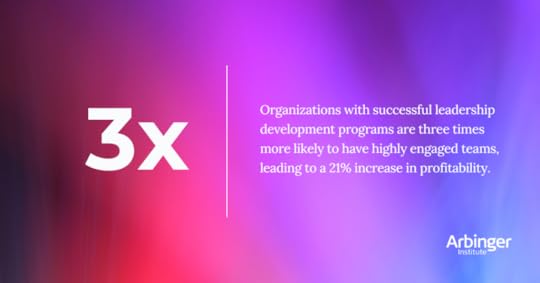
A critical quality of an effective leader is the ability to adopt an outward mindset. This mindset focuses on considering the needs, objectives, and challenges of others rather than just oneself.
Leaders who practice an outward mindset cultivate an atmosphere of collaboration and openness, paving the way for culture transformation. They lead by example, showing their team how to engage with others constructively and align personal goals with the broader organizational vision. In this way, they set the foundation for high performance by creating a sense of purpose, direction, and shared responsibility within the team.
Accountability as the foundation for team performanceOne of the most important aspects of a high-performing team is accountability. However, many organizations mistakenly focus on holding people accountable rather than fostering a workforce of self-accountable individuals. Effective leaders understand that true accountability starts with a shift in mindset.
Most workplace challenges stem from a self-focused mindset, where individuals prioritize their own needs and challenges over those of their teammates. By cultivating an outward mindset, leaders encourage employees to take ownership of their actions and their impact on others. This shift builds trust and collaboration among team members and eliminates the “blame game,” replacing it with a culture where everyone is committed to shared goals.
To improve team performance, leaders must focus on fostering a culture of self-accountability and encouraging an outward mindset among their team members. This will not only enhance individual performance but also strengthen team dynamics and drive overall success.
Practical tips for promoting team accountability as a leaderSet clear goals: Help team members clearly understand their responsibilities and how their work contributes to the organization’s overall objectives.Encourage open feedback: Establish regular feedback loops where team members can discuss progress, address concerns, and share constructive feedback.Model accountability: Leaders should embody accountability by owning their mistakes, seeking feedback, and demonstrating a commitment to improving performance.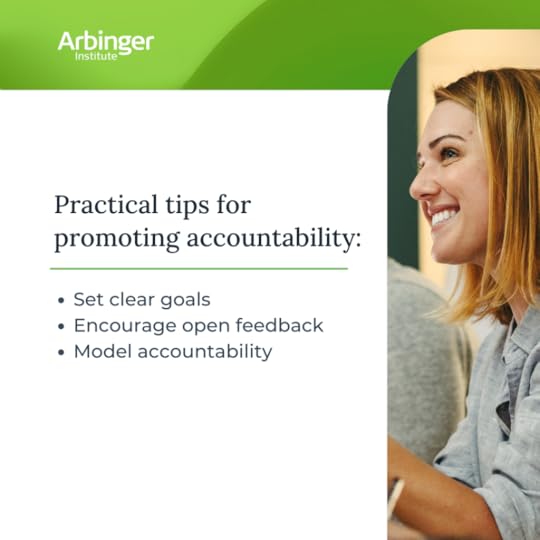 Cultivating strong relationships within teams
Cultivating strong relationships within teamsHigh-performing teams are built on authentic relationships. When team members trust and genuinely care about one another, they work more effectively and are more willing to go the extra mile to achieve collective goals. Leaders play a vital role in fostering these relationships by creating a culture of openness, empathy, and support.
Cultivating relationships in the workplace can improve team performance by enhancing knowledge sharing, collaboration, and conflict resolution. It also significantly improves team morale and productivity. When employees feel connected and supported, they’re more likely to engage actively, communicate openly, and work collaboratively towards common objectives.
By prioritizing relationship-building, leaders can create a positive and supportive work environment that drives high-performance teams and fosters a sense of belonging among team members.
Practical tips to promote relationship-building as a leaderConduct regular check-ins: Schedule one-on-one and team check-ins to discuss progress, address concerns, and strengthen connections. Facilitate team-building activities: Organize activities that encourage team members to bond, share experiences, and develop a deeper understanding of each other.Promote cross-departmental connection: If your team collaborates closely with another, it’s important to foster communication between them. Even before starting the project, taking the time to connect these teams can help ensure a smooth workflow. (Try Arbinger’s Start in the Right Way tool to facilitate these conversations.)Creating peer support opportunities: Encourage peer-to-peer learning and support systems, where team members can share knowledge, skills, and feedback with one another.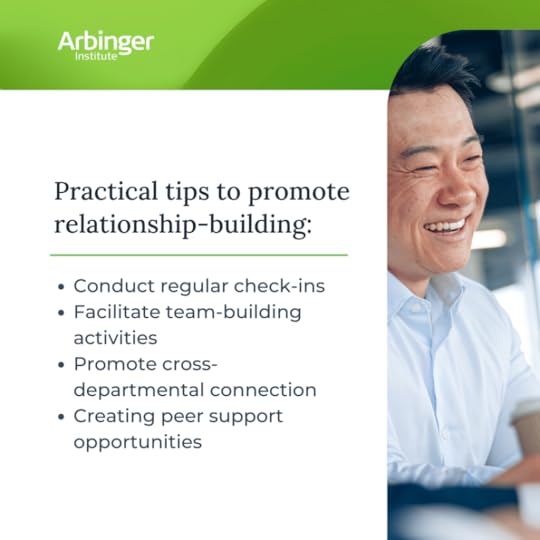 Collaboration as a pathway to innovation
Collaboration as a pathway to innovationCollaboration is a key driver of innovation and problem-solving. When teams work together effectively, they bring diverse perspectives, skills, and ideas to the table, leading to more creative and innovative solutions. Collaboration also fosters unity and camaraderie among team members, creating a positive work environment and boosting morale.
Leaders play a crucial role in fostering a collaborative culture. By promoting teamwork, setting collective goals (and helping every individual understand their role in them), and modeling collaborative behavior, leaders encourage their teams to work towards a common vision. When collaboration becomes a natural part of the team dynamic, productivity and efficiency are enhanced, and processes are streamlined, contributing to the organization’s overall success.
Practical tips to strengthen collaboration:Encourage cross-functional projects: Create opportunities for team members from different departments to work together on shared projects, broadening perspectives and enhancing collaboration.Open communication channels: Implement regular meetings, team huddles, and collaborative tools to facilitate open dialogue and idea-sharing.Promote shared problem-solving: Involve the team in decision-making and problem-solving processes to foster a sense of ownership and collective responsibility.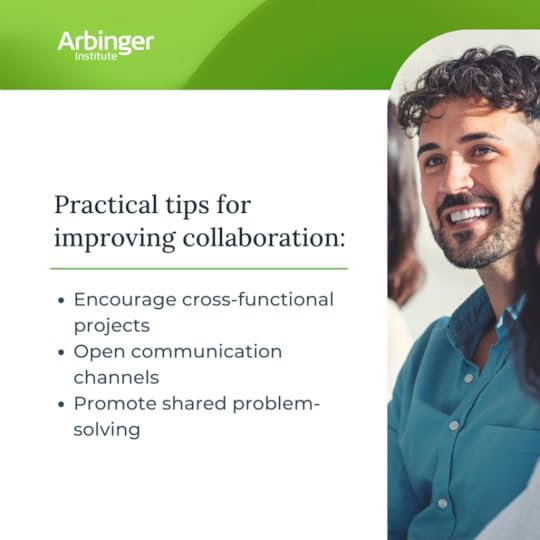 Transforming conflict into constructive dialogue
Transforming conflict into constructive dialogueConflict in the workplace is inevitable, but how it’s managed significantly impacts team performance. Suppressing conflict can stifle innovation and accountability, while unchecked disagreements can lead to negativity and hinder progress. The key lies in transforming conflict into a constructive force.
When leaders encourage diverse viewpoints and vulnerable discussions, conflicts can become opportunities for growth and creativity. Healthy conflict invites team members to voice concerns, challenge assumptions, and explore different solutions. This open exchange fosters a sense of shared responsibility and empowers individuals to hold each other accountable for achieving common goals.
Practical tips for transforming conflict into a productive forceUse conflict resolution tools: Implement tools and frameworks to guide discussions and resolve disagreements effectively. Try Arbinger’s Make Communicatation Safe tool as a start. Foster psychological safety : Create an environment where team members feel safe to express their ideas and concerns without fear of judgment or retribution.Encourage open dialogue: Invite team members to openly address issues and explore solutions together, promoting mutual understanding and collaboration.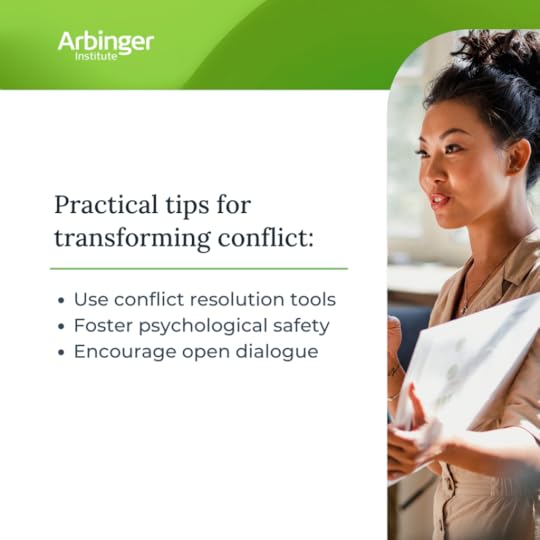 A mindset-focused approach to improve team performance
A mindset-focused approach to improve team performance Effective leadership is the driving force behind team performance. By focusing on the four essential elements—becoming fully accountable, cultivating relationships, collaborating effectively, and transforming conflict—leaders can create a culture of high performance and continuous growth.
To improve team performance, the most impactful leaders develop an outward mindset that transforms both individual and team dynamics, fostering an environment where everyone is aligned, engaged, and empowered to achieve shared goals.
While we’ve covered many strategies to improve team performance, you’ll notice that it all starts with a shift in mindset. By reflecting on your leadership practices and considering how a mindset-focused approach can help you build a high-performance team, you can drive transformation and achieve exceptional results.
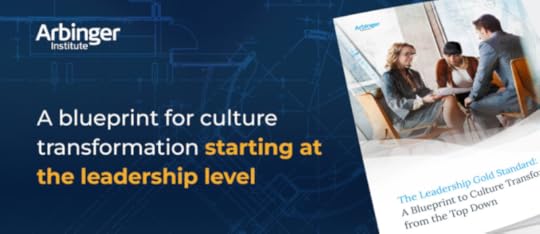 hbspt.cta.load(23346030, '8f5452cd-0443-41dc-964a-e8479bbf2a5a', {"useNewLoader":"true","region":"na1"});
hbspt.cta.load(23346030, '8f5452cd-0443-41dc-964a-e8479bbf2a5a', {"useNewLoader":"true","region":"na1"}); The post How leadership impacts team performance appeared first on Arbinger.
October 9, 2024
Leadership events: Upcoming Arbinger events and webinars to attend this fall
As we enter the final months of 2024, Arbinger is thrilled to announce a powerful lineup of leadership events designed to inspire, engage, and transform how you lead. Whether you’re looking to enhance your conflict resolution skills, understand culture ownership, or dive deep into leadership trends, these upcoming webinars and events are your gateway to growth.
Can’t-miss Arbinger webinars
Webinars are a fantastic way to gain insights, tools, and strategies from anywhere in the world. This fall, Arbinger is offering several online sessions geared toward tackling real leadership challenges.
Training Magazine webinar – The disconnect effectGet ready to address one of the most pressing issues in leadership today—disengagement. In partnership with Training Magazine, this webinar will explore strategies to bridge the disconnect between leaders and their teams, teach you how to communicate effectively, and use feedback to help you drive real performance and collaboration.
Date: October 24th, 2024
Sign up today!

Arbinger’s Leadership Series is your go-to for fresh insights from top leadership experts. These webinars will provide you with actionable strategies for some of the toughest leadership challenges, including conflict and culture. If you are interested in any of these upcoming events, subscribe here and we’ll send you the details.
Leadership Series: Conflict resolutionWe all know conflict can be destructive in organizations, but it doesn’t have to be. This session will break down how to resolve conflicts in ways that strengthen relationships and lead to lasting solutions.
Leadership Series: Who owns culture?Ever wondered who really drives culture in an organization? In this engaging panel discussion, thought leaders will delve into the question of ownership and the role leaders play in shaping a thriving workplace culture.
Leadership Series: Workplace trends for 2025Stay ahead of the curve with this must-attend session, where we explore workplace trends for 2025 and beyond. Don’t miss out on a chance to gain early insights into what’s trending in leadership, team performance, and more.
More Arbinger leadership eventsFor those looking to connect in person, Arbinger will be attending several key industry conferences and hosting field-specific webinars tailored to different practices, including healthcare, government, and corporate sectors. If you’re ready to network and gain industry-specific leadership insights, these upcoming events are for you.
Healthcare industry leadership programs:
These programs are designed to equip healthcare professionals with the skills and strategies needed to lead effectively in a rapidly changing industry. Participants learn to improve team collaboration, drive innovation, and navigate the complexities of healthcare management to foster better patient outcomes and organizational success.
Healthcare performance management webinarLeaders in healthcare will benefit from this tailored session focused on performance management in high-pressure environments.
Date: October 18th, 2024
Sign up here!
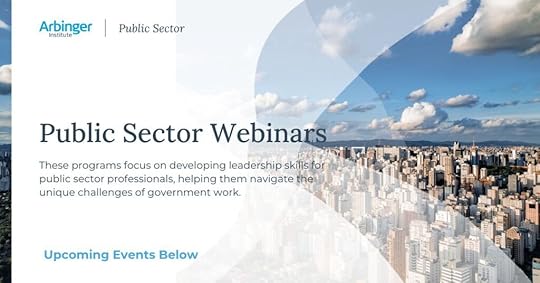
These programs focus on developing leadership skills for public sector professionals, helping them navigate the unique challenges of government work. Participants learn to lead with integrity, foster collaboration across departments, and implement innovative solutions to serve their communities and drive positive change at both federal and local levels.
MCCA Annual Meeting – Boston, MAJoin us at the MCCA (Major Cities Chiefs Association) 2024 annual meeting, where Arbinger will contribute to discussions on leadership and diversity.
Date: October 16th to 18th, 2024
Sign up here!
We’ll be participating in the International Association of Chiefs of Police (IACP) event, sharing leadership insights with law enforcement professionals.
Date: October 19th to 22nd, 2024
Reserve your spot!
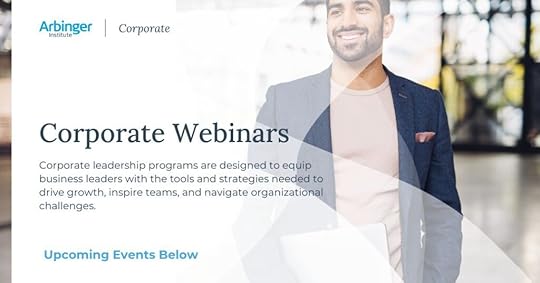
Corporate leadership programs are designed to equip business leaders with the tools and strategies needed to drive growth, inspire teams, and navigate organizational challenges. Participants learn to enhance decision-making, foster a culture of innovation, and lead with vision to ensure long-term success in a competitive business environment.
Construction webinar – Psychological safety and inclusionThis webinar will provide practical tools for navigating leadership challenges in this complex sector. With a focus on fostering psychological safety and inclusion, attendees will learn how to create environments where team members feel safe to speak up, contribute ideas, and fully participate, driving both collaboration and productivity.
Details coming soon!
Join us for this action-oriented webinar, where we’ll explore effective conflict resolution techniques that eliminate the blame game, reduce workplace drama, and foster a culture of accountability and collaboration. Learn strategies that help senior executives address disputes constructively, leading to more cohesive and high-performing teams.
Bookmark for more information!

The Leadership Collective fall roadshows are designed for leaders who want to roll up their sleeves and dive deep into leadership transformation with hands-on learning, peer discussions, and expert workshops.
Leadership Collective – Austin roadshowIf you’re in Austin, don’t miss this immersive in-person event, featuring leadership workshops and networking opportunities.
Date: October 14th, 2024
Register now!
Boston leaders, get ready! This roadshow will feature impactful discussions on leadership challenges and opportunities for growth.
Date: October 17th, 2024
Join here!
Can’t make it to Austin or Boston? Join us online for the virtual edition of the Leadership Collective roadshow. You’ll get all the same great content from the comfort of your office (or home!).
Date: October 29th, 2024
Sign up today!

Arbinger is also proud to partner with Pavilion’s top-tier leadership community. We’ll be attending GTM 2024 and offering insights on leadership strategies, roadblocks, and how to overcome them.
Pavilion GTM 2024 – AustinWe’ll be on-site in Austin for this can’t-miss Pavilion event. Don’t miss out on hearing Arbinger’s CRO, Cameron Cozzens, discuss how to create self-aware leaders.
Date: October 14th to 16th, 2024
Register now!
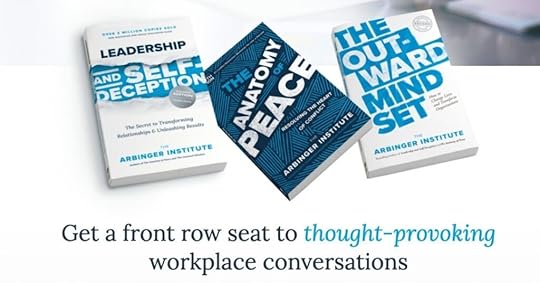
What better way to deepen your leadership understanding than by reading together? Our book club is currently diving into The Outward Mindset, a must-read for any leader looking to make meaningful change and shift towards a more collaborative, outward-focused approach.
Book club: The Outward Mindset (chapters 12 – 15)Join us as we continue our journey through The Outward Mindset and explore what it means to lead with an outward mindset.
Date: October 9th, 2024
Join our book club!
The conversation continues as we discuss key insights from chapters 16 through 18.
Date: October 24th, 2024
Join our book club!
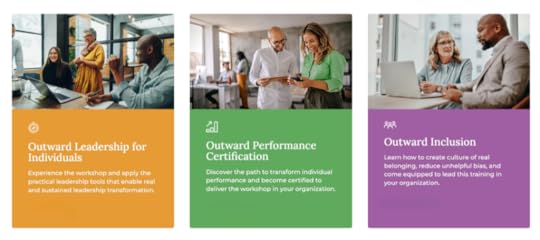
Explore Arbinger’s transformative leadership programs designed to drive impactful change in your organization:
Outward LeadershipArbinger’s leadership development program is designed to help leaders adopt an outward mindset, focusing on collaboration, accountability, and organizational performance. By shifting from self-focused management to a people-centric approach, leaders can effectively address conflicts, inspire their teams, and drive lasting change. This program empowers organizations to unlock their full potential and create high-performing cultures.
Here is a list of upcoming Outward Leadership events for the remainder of 2024:
Outward Leadership (Virtual) – October 16th to 18th, 2024 Outward Leadership (Salt Lake City, UT) – October 23rd to 25th, 2024 Outward Leadership (Virtual) – November 6th to 8th, 2024 Outward Leadership (Virtual) – November 13th to 15th, 2024 Outward Leadership (Washington, DC) – November 20th to 22nd, 2024 Outward Leadership (Virtual) – December 4th to 6th, 2024Discover how Outward Leadership can transform your leadership style and elevate your team’s success. For event dates and details, visit the Arbinger events page.
Outward Performance CertificationsOutward Performance is a certification program that equips leaders with the skills to confidently guide their teams through a transformative mindset shift—from inward-focused to outward-focused thinking. This shift enables organizations to improve collaboration, break down silos, and enhance overall accountability and performance. Leaders gain the tools necessary to foster a high-performance culture and drive sustainable results.
Here is a list of upcoming Outward Performance Certification events for the remainder of 2024:
Outward Performance (Virtual) – October 10th to 11th, 2024 Outward Performance (Salt Lake City, UT) – October 21st to 22nd, 2024 Outward Performance (Virtual) – November 14th to 15th, 2024 Outward Performance (Washington, DC) – November 18th to 19th, 2024 Outward Performance (Virtual) – December 9th to 10th, 2024Optimize your leadership and elevate your team’s success with Outward Performance certification. For details on upcoming events and registration, visit the Arbinger events page.
Outward InclusionOutward Inclusion is a dynamic program designed to help leaders foster true diversity, equity, and inclusion in their organizations. Through an outward mindset approach, leaders learn to create environments where every voice is valued, leading to enhanced collaboration, innovation, and performance. This certification equips participants with the tools and confidence to drive sustainable inclusion efforts and create lasting cultural change.
Here is a list of upcoming Outward Inclusion events for the remainder of 2024:
Outward Inclusion (Virtual) – October 7th, 2024 Outward Inclusion Train-the-Trainer (Virtual) – October 8th, 2024 Outward Inclusion (Virtual) – November 21st, 2024 Outward Inclusion (Washington, DC) – November 22nd, 2024 Outward Inclusion Train-the-Trainer (Virtual) – November 22nd, 2024 Outward Inclusion (Virtual) – November 25th, 2024 Outward Inclusion Train-the-Trainer (Virtual) – November 26th, 2024Lead the way in building an inclusive, high-performing culture with Outward Inclusion. For event details and registration, visit the Arbinger events page.
Ready to transform your leadership? These events are just the beginning! Whether you attend in person, virtually, or join one of our book club discussions, each event will provide actionable insights to help you lead your organization to greater success.
Stay tuned for more updates and make sure to reserve your spot.
The post Leadership events: Upcoming Arbinger events and webinars to attend this fall appeared first on Arbinger.
Arbinger Institute's Blog
- Arbinger Institute's profile
- 375 followers



